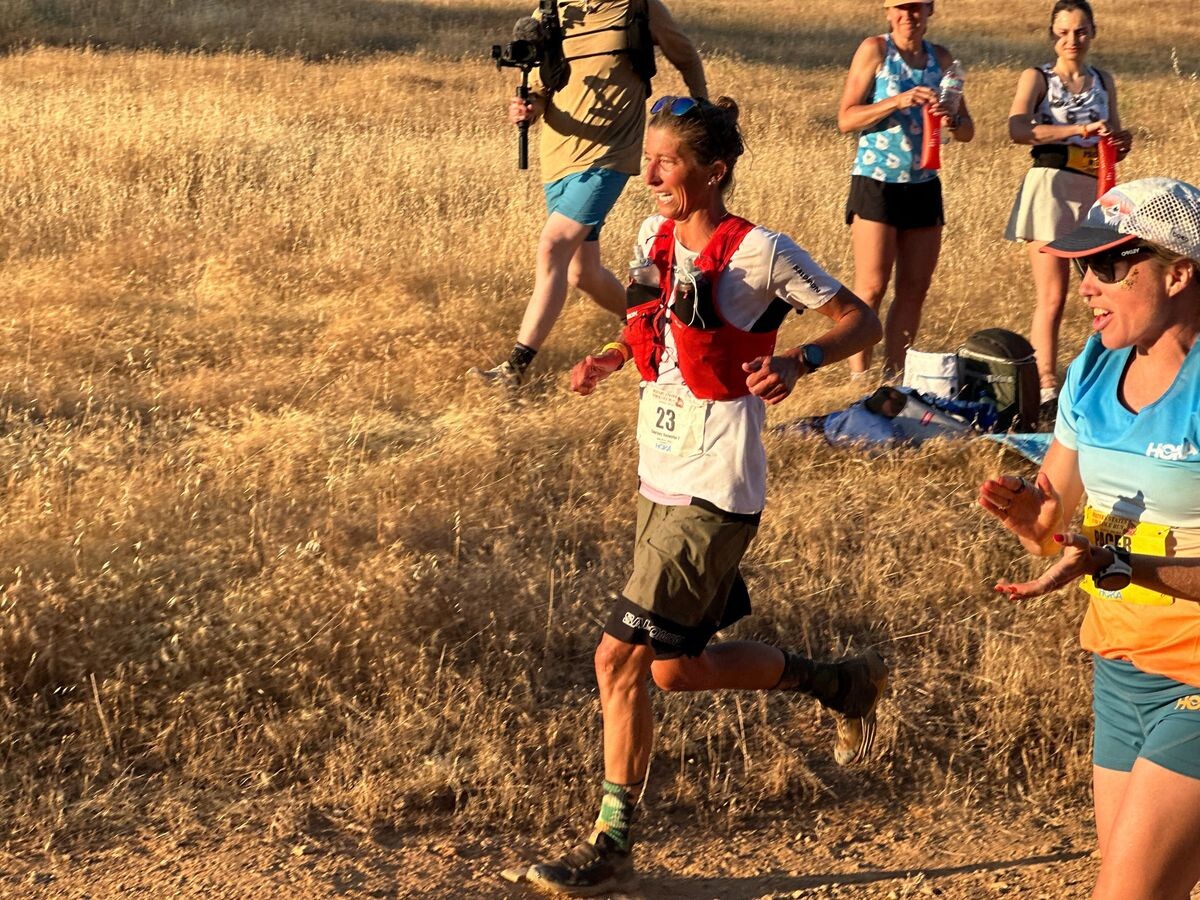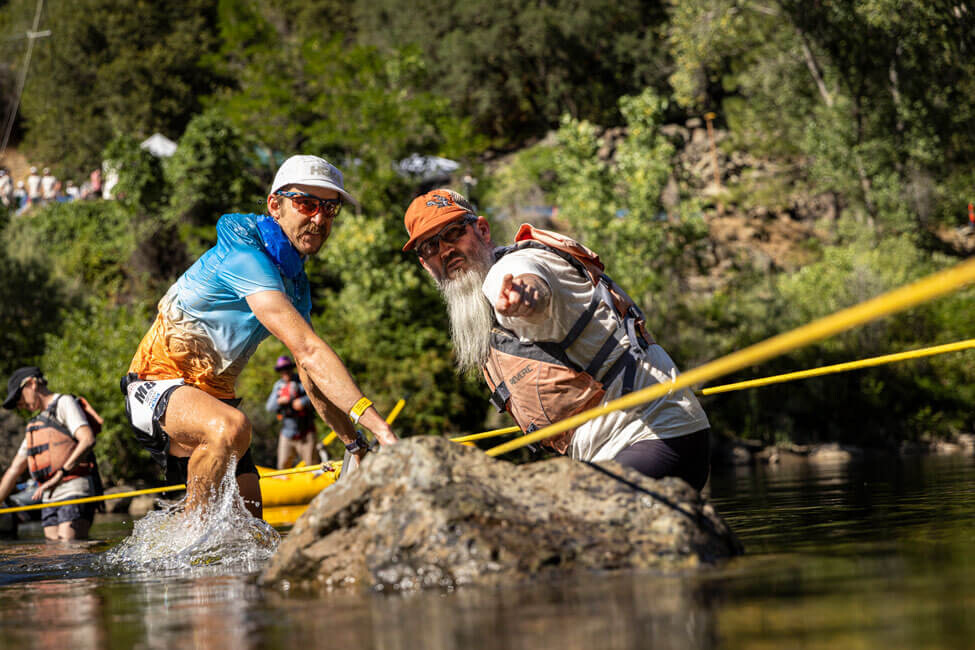Running News Daily
Running News Daily is edited by Bob Anderson. Send your news items to bob@mybestruns.com Advertising opportunities available. Train the Kenyan Way at KATA Kenya and Portugal owned and operated by Bob Anderson. Be sure to catch our movie A Long Run the movie KATA Running Camps and KATA Potato Farms - 31 now open in Kenya! https://kata.ke/
Index to Daily Posts · Sign Up For Updates · Run The World Feed
Articles tagged #Adam Campbell
Today's Running News
Western States unveils new anti-doping policy
The legendary 100-mile race has partnered with the U.S. Anti-Doping Agency as part of an "ongoing commitment to clean sport".
On Tuesday, Western States Endurance Run (WSER) revealed a new partnership with the U.S. Anti-Doping Agency (USADA), unrolling new regulations around anti-doping and reaffirming the race’s “continuing commitment to clean sport,” as their website explains. Here’s what you need to know.
While WSER has for years had drug testing in place, the previous policies were not as stringent (and were not governed by USADA). For some runners eager to toe the line in Auburn, Calif., on June 29, the rules and expectations around testing are now more clearly laid out; others have more questions and are requesting further clarification.

Entry rules
WSER’s entry rules explain that athletes found guilty of doping offenses by governing bodies like WADA or USADA are barred from participating in WSER during their period of ineligibility. Additionally, any athlete subjected to a ban of three months or more is ineligible unless otherwise approved by WSER. Previously, athletes who had any infractions against the WADA code were banned for life from participating in WSER—but, as ultrarunning world champ Camille Herron explains on X, the new policy allows for “more leniency of entry for those who were given a warning/1-2 month ban.”

Levelling the playing field
WSER will be taking testing seriously and targeting elite athletes and top age-group competitors for post-race urine and/or blood testing. Sample collection and analysis will be handled by USADA, ensuring a thorough and transparent process. USADA will also be responsible for results management, including communicating with athletes regarding test results, investigating violations and imposing sanctions as necessary. WSER also reserves the right to impose its own sanctions.
Prohibited substances
WSER strictly adheres to the WADA (World Anti Doping Agency) Code, prohibiting the use of substances on the WADA Prohibited List. Athletes are responsible for knowing and complying with these rules. The WSER website provides resources to help athletes check their medications and suggests that runners be extremely cautious when using supplements.
Athlete response
The updated drug policies have garnered some positive responses on social media, while some athletes, such as Canadian pro mountaineer and ultrarunner Adam Campbell, are asking for further explanation.
WSER has a partnership with trail running giant UTMB, and while NSAIDs (nonsteroidal anti-inflammatory drugs, including aspirin and ibuprofen) are, notably, banned at all UTMB races, runners at WSER would not be tested for them under these new guidelines.
“The issue is the terms are not clearly defined,” Campbell posted on X. “Strong stances usually demand greater clarity. If UTMB sanctioned someone for a doping violation how would WSER handle it? Their possible violations do not necessarily sync with WADA—seems like a reasonable question to clarify.” At the time of publication, the race had not yet responded.
The 2024 edition of WSER will take place on June 29-30.
by Keeley Milne
Login to leave a comment
Western States 100
The Western States ® 100-Mile Endurance Run is the world’s oldest and most prestigious 100-mile trail race. Starting in Squaw Valley, California near the site of the 1960 Winter Olympics and ending 100.2 miles later in Auburn, California, Western States, in the decades since its inception in 1974, has come to represent one of the ultimate endurance tests in the...
more...5 creative ways to unlock your running potential
Every runner seeks the elusive formula for peak performance, and while traditional strategies play a vital role, exploring unconventional avenues can unearth untapped potential. Performance coaches, authors and the hosts of a new podcast called Farewell, Brad Stulberg and Steve Magness, recently shared some innovative ways to tap into your best performance.
These methods, adapted from the training of legendary ultrarunner Courtney Dauwalter, Kona Ironman champ Chelsea Sodaro, and Canadian Olympic champ decathlete Damian Warner, can help you build an arsenal of tools that will allow you to become your best running self, whatever your goals may be. Look Embrace curiosity over fear

In the premiere episode of Farewell, Stulberg interviews ultrarunning GOAT Dauwaulter, whose 2023 season saw her winning the triple crown of ultramarathons (UTMB, Western States 100 and Hardrock 100). Dauwaulter is known for her curiosity-based approach to racing and says that whenever she works her way through a unique challenge, she puts it into her “filing cabinet” of experiences built through more than a decade of running ultras.Consider approaching challenges with curiosity rather than fear.

Dauwaulter’s journey started with curiosity-driven road marathons, leading her to conquer ultramarathons and achieve astonishing feats. When faced with a daunting task, adopt a mindset of exploration, saying to yourself: “let’s just see what happens,” rather than feeling like you must succeed at all costs. The unexpected outcomes might surprise you and expand your perceived limits.Use the power of “yes”
Chelsea Sodaro, the Kona Ironman world champ winner, draws inspiration from a mantra the athlete and her husband taught their daughter when she was going through a “no” phase—“yes, yes, yes.” This simple yet potent affirmation becomes a guiding force during challenging moments. Applying this mantra encourages a commitment to embrace difficulties and lean into the hard aspects of training. The next time you encounter a tough run or race, channel the spirit of “yes, yes, yes” to shift from resistance to resilience.Less is more: subtract to succeed
Stulberg suggests challenging the instinct to add more when faced with a hurdle. Research shows that humans tend to be “adders,” inclined to incorporate new strategies, rather than simply subtracting impediments. When striving for behaviour change, consider subtracting obstacles instead of seeking additional solutions. Reflect on what you can eliminate or modify to clear the path to success, allowing simplicity to fuel progress.Consistency trumps perfect practice
Through several decades of elite competition, Canadian Olympic champion decathlete Damian Warner has learned the importance of consistency over perfection. His coach’s mantra—that there’s no such thing as a bad practice—highlights the importance of routine, unexceptional training days. Warner’s gold medal-winning experience underscores the power of sustained, consistent effort, even when conditions are less than ideal. Recognize that excellence is often built through everyday dedication rather than sporadic extraordinary performances.You are not your thoughts
In overcoming mental health challenges like OCD and anxiety, Sodaro shares a unique strategy—naming her brain (she calls hers Regina, after the character in the movie Mean Girls). By personifying intrusive thoughts, she creates distance between herself and her mental struggles. Runners grappling with mental hurdles can apply this concept, acknowledging that their thoughts don’t define them. Naming and dismissing unwanted thoughts can provide mental clarity and resilience during demanding runs.Ultrarunner Adam Campbell’s tips to master your mid-race mindset” — Canadian Running Magazine
View on the original site.
In your pursuit of optimal running performance, integrating these unconventional approaches can inject a fresh perspective, foster growth, and aid in unlocking your true potential. Remember, innovation often lies in the willingness to explore the uncharted paths of curiosity, affirmation, simplicity, consistency and mental resilience.
by Running Magazine
Login to leave a comment
Canadian ultrarunner Adam Campbell’s tips for returning to running after injury
Alberta’s Adam Campbell has been a professional endurance athlete for more than 25 years. These days Campbell enjoys exploring his limits in beautiful places. Over his decades of experience, Campbell has dealt with numerous injuries, from overuse niggles to life-threatening trauma.
During periods of injury, Campbell says he shifts his focus to trying to get back to doing the things he loves as quickly as possible, without compromising the recovery process. Here are his tips for returning to running after an injury.

Don’t “test” the injury
Make sure you are in fact OK to run, rather than heading out to see if your injury has healed yet. “The best bit of advice I’ve heard was from the legendary [triathlete] Mark Allen: ‘When you feel better, wait a day.’ It is sound, long-term advice.”

Have a return-to-run plan, and stick to it
Follow your return-to-run plan, even if you’re tempted to add more to your training schedule. Campbell suggests supplementing with complementary non/low impact aerobic work, if you must. The point here is not to build fitness, it’s to regain your ability to run pain-free, correct imbalances and avoid compensation injuries. From that you can build back your ability to train.
Do your first few runs back in a controlled environment (and solo)
A treadmill, a track or a grass field are great options so that you can stop or return home immediately if things start to act up. “Don’t run with a group, where you may feel pressure to run at a certain pace or distance,” suggests Campbell. A coach or physiotherapist watching you is fine.
Don’t run with ear pods
Running with no distractions helps you to tune in to your body, which is important when you have taken some time off. Campbell explains that running may feel weird at first. “Try to visualize good form, and run that way,” he suggests. “At the same time, don’t analyze your body into a state of creating or holding onto injuries. Bad neural connections can form when we are afraid of getting injured again.” Campbell suggests filming yourself running, and analyzing the video with your support network.
Warm up properly
Campbell suggests some easy running paired with active mobility to make sure your body is limbered up before you start your run. “Think about good form, and stick to your plan,” he says. Walk breaks are a good option if needed. “Walk/runs are great ways of getting back into running,” Campbell says.
Post-run, be honest with yourself about how it went. “If things still feel off, take more time off running,” Cambell suggests. If things do go well, Campbell recommends building back progressively. “Don’t jump back into your pre-injury miles or paces; work your way back up to them.”
Stay diligent with a rehab and prehab routine
“Don’t get lazy with that, just because things feel better,” Campbell says. Keep doing what helped you heal your injury as you move forward through the return-to-run process.
by Keeley Milne
Login to leave a comment
Ultrarunner Adam Campbell’s tips to master your mid-race mindset
If you’ve ever found yourself nailing your goals in a race, you may have also experienced some panic or fear, and wondered how exactly to continue. Canadian ultrarunner and mountaineer Adam Campbell addressed this on social media recently, sharing: “The first time you move from dreaming about something to actually being in a position to see it through can be scary.
It takes a mind shift to not panic, to keep executing the way you have been, and keep flowing the way you were that got you there in the first place.”
Finding success in a race can be thrilling, but also frightening, and it can derail even the most skilled athlete. We caught up to Squamish-based Campbell to hear his tips on staying on track when you suddenly find yourself performing in a way you’ve only dreamed of.
Think ahead–imagine your emotional state in various outcomes

Campbell notes it’s amazing how quickly we can lose sight of our original race plans, attitude and mind frame when we find ourselves in a position to succeed. He suggests thinking these situations through ahead of time.
“We often visualize a process, i.e., getting nutrition, what our pace should be, or how we want to handle certain sections of a course, but we don’t think about the emotional state we want to be in when we are achieving our desired outcome,” he explains.
Instead of rising to the occasion, when we find ourselves nailing our goal, we’re often flooded with “don’t screw up” thoughts, he says. These are draining–and Campbell suggests the more emotional steadiness we can maintain in a race, the more our energy can be channeled toward moving fast.

“Try to think about how it might feel being on pace or just ahead of it [in a race] while training,” Campbell says.”Think about what happens and what you’re going to tell yourself when you are nailing your game plan, so that when you suddenly find yourself there, it’s not a surprise, and you aren’t as nervous.”
Recognize the stress you’re feeling, and disarm it
Campbell notes that we put a lot of pressure on ourselves when we aim for certain times or positions in a race. While this pressure can be positive, getting us training and propelling effort into pushing our limits, the same pressure can backfire and end up causing a blow-up in a race.
“To some degree, it’s a stress response, a form of self-protection from a perceived threat, in this case, self-imposed pressure,” says Campbell. Recognizing the stress and acknowledging why it is appearing can help disarm it.
“I have even heard of people giving a name to the stress, like ‘John’ and when those ‘don’t mess up’ thoughts show up, you can thank John for appearing and trying to protect you, but also tell him that you don’t need his help right now and politely ask him to leave,” Campbell shares.
If that seems too abstract, Campbell suggests giving yourself specific tasks to focus on, from keeping your form dialed in or focusing on nutrition in long races, to help you stay present and negate some of that potential anxiety.
Practice emotional self-regulation in training
Campbell emphasizes self-talk and practicing emotional regulation as essential components of training.
“I create stories and narratives for myself, visualizing different race scenarios during training sessions,” he adds. “This kinesthetic imagery, or visualization, can be used to help you establish positive responses to negative situations that may arise in races.”
Avoid self-sabotage–look at your patterns
“If you consistently find yourself making decisions mid-race, or even making decisions going into races, that self-sabotage your desired results, do an honest debrief about everything you did going into and during the race,” suggests Campbell.
“Analyze your behavior and recognize your patterns–name them. When you start to find yourself second-guessing what you are doing, have a conversation with the doubter in you and ask them to kindly move on.”
Campbell points out that in a long race, if you find yourself in an extended bad patch or low point, slowing down to eat and reframe your mental state can make a world of difference. “It is amazing how much our emotional state can vary, just because we are underfuled in those long efforts,” he says.
Revisit your goals
Campbell says we often don’t talk about the very important need to revisit our goals: “Are the factors you are focusing on something you can actually control or are they external factors?” He suggests keeping your focus on the process of executing the best race you can on the given day.
by Running Magazine
Login to leave a comment
Canadian trail ultrarunner Adam Campbell has withdrawn from the Hardrock 100
Login to leave a comment









